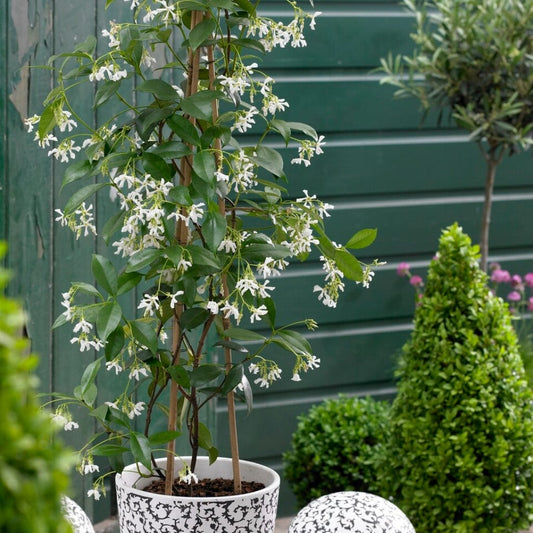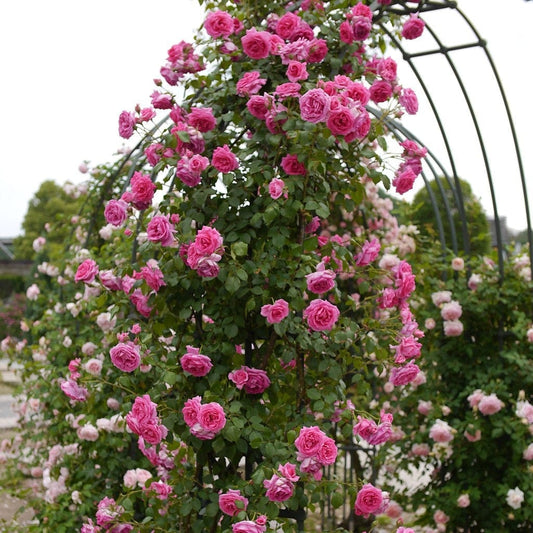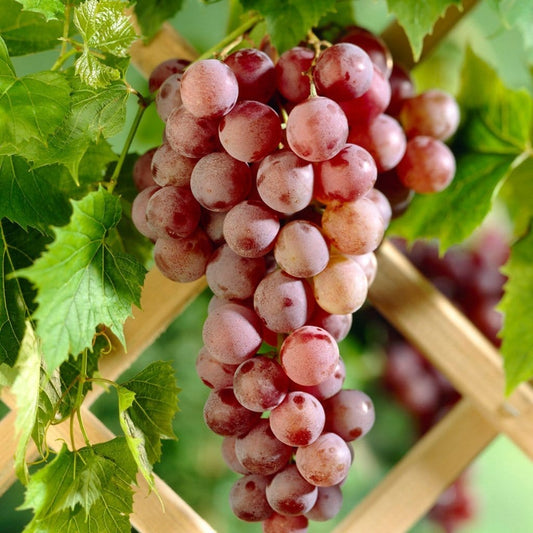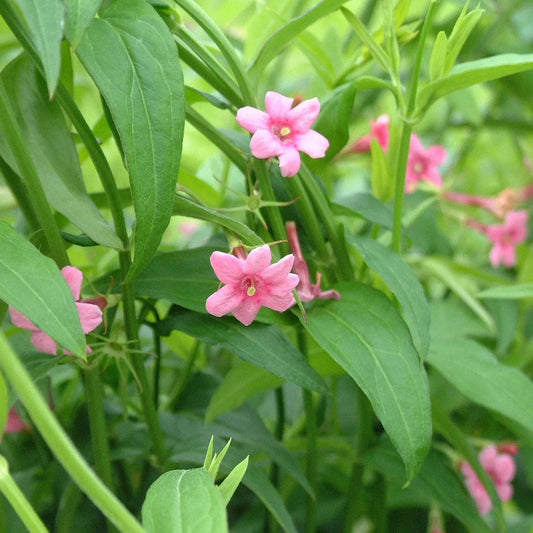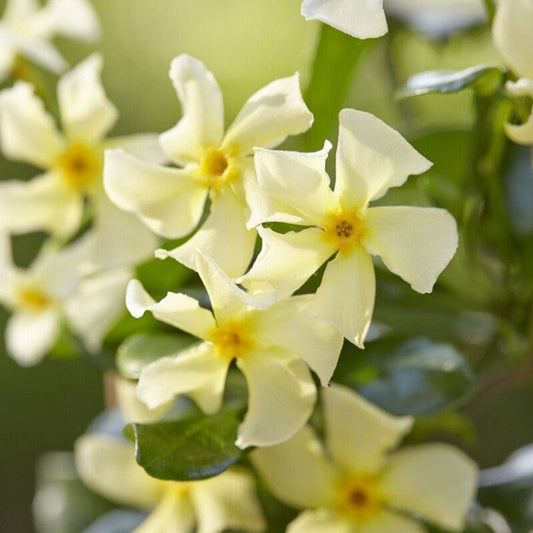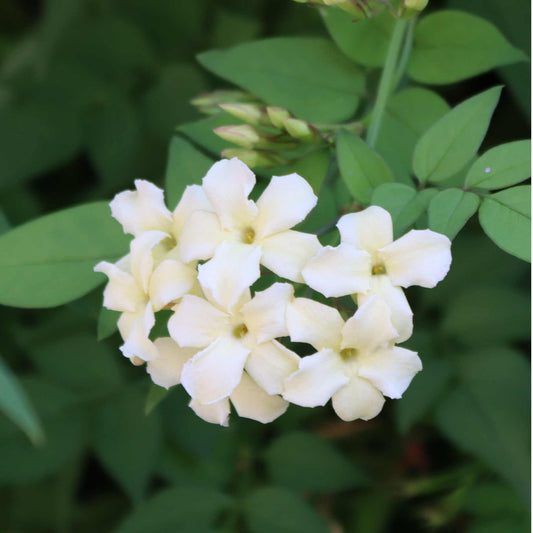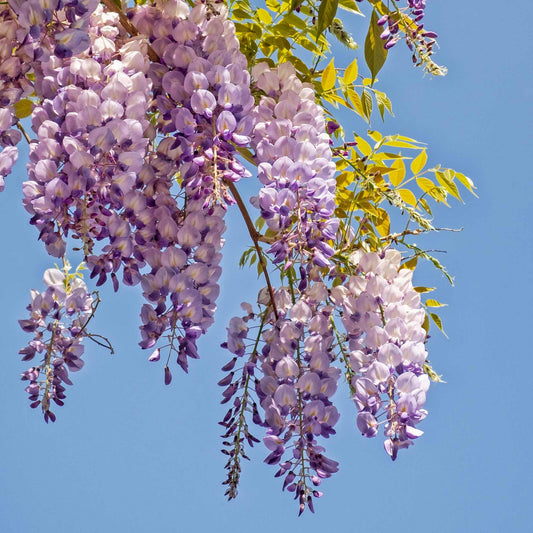Which is the Best Climbing Plant for Your Garden?
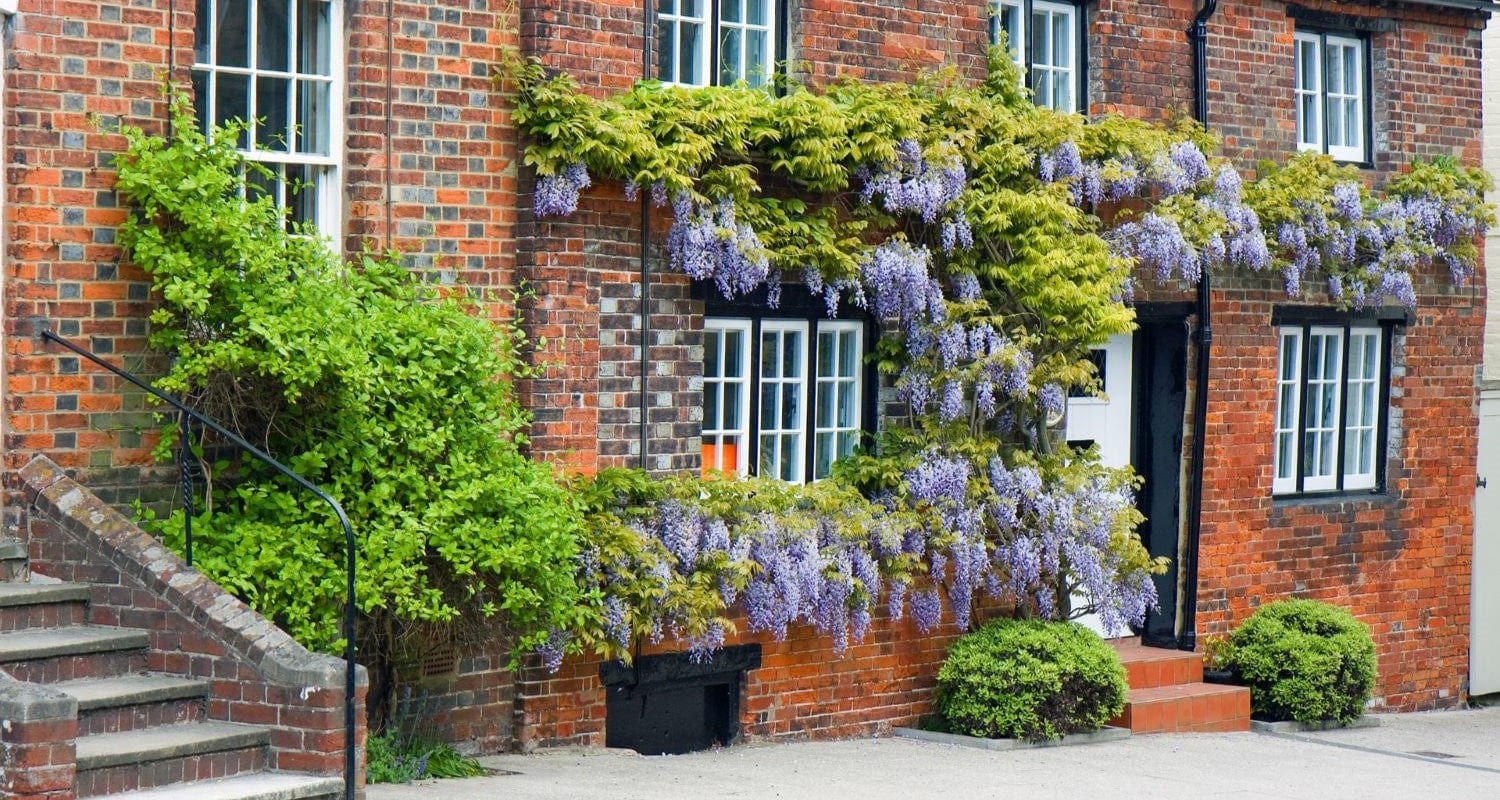
Climbing plants are horticultural heroes, solving a multitude of garden problems including shady corners, unspeakable structures, noise and pollution, while also adding flowers, fragrance, wildlife appeal and even fruit to your environment. Even better, they take up very little room in your garden, allowing you to grow more in a small space.
But which is the best climbing plant for your garden? We’ve done the research so you don’t have to. Our specialist climbing plant growers in Worcestershire grow the largest range in the UK and with their expert advice, we’ve chosen what we consider to be the best options for all your vertical growing needs.
Jump to:
- Shop the best climbers
- Best climber for walls
- Best evergreen climber
- Best fast growing climber
- Best flowering climber
- Best scented climber
- Best climber for shade
- Best climber for wildlife
- Best fruiting climber
Shop top climbers
Best climber for walls: Clematis Etoile Violette
Our grower Molly is slightly biased here, as clematis are her favourite plants! We have to agree - clematis are incredibly versatile and colourful climbers with varieties that will grow almost anywhere. Their relatively compact size and form means that clematis are ideally suited for walls and fences - grow them up a trellis for the best results. After much heated debate, we’ve all agreed that RHS award winning Etoile Violette is a firm favourite. Blooming right from June to the first frosts, its deep violet blooms will cover a wall or fence panel in no time, with fresh green foliage that’s also especially resistant to clematis wilt. Etoile Violette is as popular with the bees as it is with us, and also looks great on a pergola or obelisk.
Need a different colour? Flowers at a different time of year? There’s a clematis for that!
Best evergreen climber: Star Jasmine
What’s not to love about Star Jasmine? This award winning all-rounder was voted not just best evergreen but best overall climbing plant by our growers - no mean feat. Jasmine is mainly grown for its scent - a strong floral fragrance which will fill your garden all summer long, becoming stronger in the evenings. The twining evergreen foliage is particularly lovely, especially when it’s covered in hundreds of starry white flowers, and turns to rich shades of red and bronze in the autumn. Star Jasmine grows fast, covering pergolas, walls and doorways but responds well to pruning so you can grow it to the size of your choice and even keep it in a pot. It’s also self clinging so it won’t need any additional support as it grows. Like all evergreens, Star Jasmine will provide vital shelter and food for wildlife all year round - everyone wins!
Discover more Jasmine plants.
Best fast growing climber: Virginia Creeper
Climbers aren’t just good looking and space saving - they can also cover up a multitude of sins (and by sins I mean that ramshackle ‘summerhouse’ that the last occupants of your house left behind). Some of the fastest growing species include ivy, Boston Ivy and Russian Vine - which will also help to absorb pollution and soften noise from roads and surrounding houses. Virginia Creeper is an absolute beast, which will grow to a height of around 20m if you want it to, and if you don’t it’s easy to prune. The fresh green foliage gets a new lease of life in autumn, when it turns to an eyecatching bright red colour. Easy to look after, it’s fully hardy, grows happily in sun or shade and is self clinging without leaving marks on the walls.
Check out more speedy species.
Best flowering climber: Climbing rose ‘Parade’
A strong category, this, with clematis, honeysuckle, ceanothus and wisteria in the running - but who can resist the idea of roses around the door? (Or the pergola or the arch or the fence or - you get the picture!) Climbing roses are fast growing, free flowering and usually scented - they like a sunny spot, but will also grow in partial shade, and should be tied in to their support structure. You can expect your climbing rose to bloom in June and last all the way until the first frosts if you keep deadheading. It’s a hard choice (cards on the table, absolute rose obsessive here) but Parade is an outstanding plant. This free flowering variety is covered in clusters of big, deep pink roses with a true old rose scent - just what roses used to smell like.
If you’d rather your climber flowered in spring, Clematis armandii is a great choice - as is Winter Jasmine (January to March). Why not combine all three for a year round display?
Check out more of our favourite climbing roses.
Image source: Flickr.
Best scented climber: Wisteria sinensis
We know there are a lot of scented climbers to choose from - roses, jasmine, honeysuckle - so the bar has been set VERY high in this category, but wisteria is one of those flowers whose scent evokes a whole season. Blooming in May, the long, pendant racemes (flower clusters) are typically soft shades of blue, purple or white (although you can sometimes find pink ones) and have a sweet, lingering and almost grape-like perfume that you’ll keep going back to time and time again. Wisteria Sinensis varieties (Chinese wisteria) are more highly scented than the longer clustered Floribunda types (Japanese wisteria) but both make a wonderfully dramatic, fragrant addition to walls, pergolas or arches. Always buy grafted wisteria plants, as those grown from seed may not flower for years - it at all!
Find the best wisteria for your garden.
Best climber for shade: Honeysuckle Halliana
Many climbers, such as jasmine, clematis and ivy, will thrive in a slightly shadier spot but honeysuckle brings so much to the (dark corners of the) party that we can’t ignore it. Perfect for a fence, arbour or pergola, our grower recommends planting it near your seating area so you’ll not only have a cool retreat from the heat but the glorious heady scent of honeysuckle too. Halliana bursts into bloom between June and September, with showers of highly scented white and flax yellow flowers adorning its evergreen foliage. Easy to grow, low maintenance and you can even grow it in a pot.
Check out all of our growers’ recommendations for shady climbers.
Best climber for wildlife: Variegated Ivy ‘Clotted Cream’
If you love the natural look, ivy is a must. This fast growing woodland plant will soften the look of a wall, shed or fence while providing incomparable benefits to your friendly local wildlife. Ivy offers shelter for birds to nest and insects to hibernate, pollen and nectar for bees from its ivory flowers, leaves for caterpillars and berries for birds - and because it’s evergreen, that applies all year long. Hedera Clotted Cream is a popular choice due to the lovely cream-edged variegation of the frilled leaves and its clusters of small ivory coloured flowers in spring. Best of all, this award winning climber grows anywhere - even in shade - and is practically maintenance free.
Best fruiting climber: Suffolk Red grapevine
If you’re keen on growing your own fruit but don’t have a lot of ground space, fruiting climbers are your friends! Grow them outdoors trained on a pergola or trellis or indoors in a greenhouse or conservatory. Kiwifruit, honeyberries, passionfruit and cucamelons are all really rewarding to grow, but for looks, productivity and let’s be honest, impressing your friends, you can’t beat a grapevine. Mine are grown indoors in a conservatory that used to get oppressively hot, but now the grape foliage provides natural shade - and the bunches of grapes look as lovely as they taste! For beginners we’d recommend Suffolk Red, which is easy to grow and won’t sprawl out of control, producing sweet juicy red grapes that you can eat straight from the vine. If you prefer white grapes, Phoenix is a great choice too.
Last updated: 14/10/2024




















